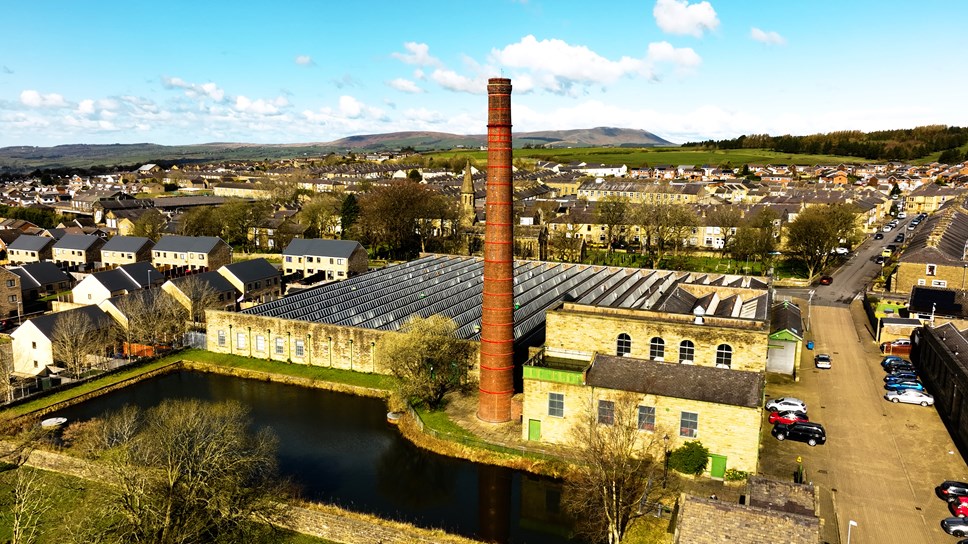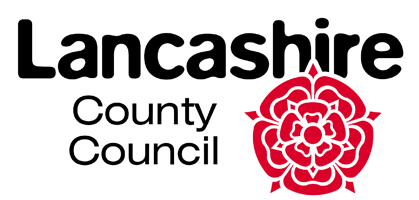
Explore Helmshore Mills and Queen Street Mill for free as part of British Textile Biennial 2023
Local residents and visitors to Lancashire can visit two of our heritage museums for free until Sunday 29 October 2023 as part of the British Textile Biennial 2023.
They can also enjoy extended opening with extra days and more time to explore, enjoy a coffee and take home a souvenir of your visit.
Lancashire County Council museums – Queen Street Mill and Helmshore Mills are supporting British Textile Biennial 2023 and hosting four art exhibitions within these unique settings.
Funded by Arts Council England and a range of partners the British Textile Biennial was first established in 2019. It throws a spotlight on the nation’s creativity, innovation, and expression in textiles against the backdrop of the impressive infrastructure of the cotton industry in Pennine Lancashire.
Queen Street Mill in Harle Syke in Burnley is a Grade 1 Listed weaving mill, built in 1894. An accredited museum with a nationally designated collection including in-situ textile machinery with two Lancashire boilers, an operating steam engine and over 300 Lancashire looms.
Helmshore Mills in the village of Helmshore in Rossendale is a scheduled monument dated back to 1789. Also an accredited museum housing Lancashire's designated textile machinery collections. This unique site consists of two historic working mills. Higher Mill, a wool-fulling mill with waterwheel and Whitaker Mill, a cotton spinning mill with a working mule spinning machine.
The 2023 British Textile Biennial looks at the environmental and human costs of the textile industry at the service of fast fashion over the last two centuries and explores possible alternatives. In artist commissions, public conversations and international collaborations, BTB23 asks if the creation of cloth can be a regenerative act – regenerating nature and people.
In addition, Queen Street Mill is also hosting a free workshop on 15 October 2023 with the Cottonopolis Collective and day focused on historic weaving including a talk and workshop on 19 October.
County Councillor Peter Buckley, cabinet member for Community and Cultural Services, said: "Queen Street Mill and Helmshore Mills are important local heritage assets and provide a glimpse into our industrial past.
"Our textile mills helped shape Lancashire as we see it today and I would encourage all residents and visitors to take advantage of this offer and come and see them for yourself."
For more information visit: www.lancashire.gov.uk/museums
Notes to editors
Exhibitions at Helmshore Mills
Located in Whitaker Mills temporary exhibition space, Soft Acid, presents large sculptural forms in a mass of synthetically coloured textiles consisting of used and reassembled garments. Deconstructed, bleached, re-dyed, reassembled, wrung out, pressed, hung and stretched, the sculptures mirror the processes used in both historic and contemporary textile factories, so it is particularly fitting to show the work here at Helmshore Mill which itself spun yarn from recycled cotton.
Fashion Revolution: How to be Fashion Revolutionary
Located in the hub between Whitaker and Higher Mill this exhibition introduces Fashion Revolution the world’s largest fashion activism movement, mobilising citizens, brands and policymakers through research, education and advocacy. Through a display of archival Zine covers, poems, and illustrations designed by their Global Network, this exhibition takes you on a journey to become a Fashion Revolutionary.
Exhibitions at Queen Street Mill
LITMUS: Environmental Legacies of Cotton
Located in the iconic weaving shed of Queen Street Mill, Litmus is an incredible sculptural piece installed throughout the length of the mill.
It brings together a series of large-scale textile pieces by artist Natalie Linney with interdisciplinary research from the University of Manchester presented in the museum's entrance area. Led by Dr Laura Pottinger, Prof. Alison Browne and Natalie Linney in collaboration with the Cottonopolis Collective, the work draws on multiple meanings of a ‘litmus test’ – a universal, dye-based indicator of pH levels derived from lichen, and a social indicator proving success, impact or values. It explores how working collaboratively with cloth, colour and environmental materials might begin to unearth and unpick the local and global environmental consequences of the North West’s cotton industry.
Located in the tapesize room of Queen Street Mill Threadbare Narratives alludes to the dark histories and myths surrounding cotton and the movement of knowledge, raw materials and people that underpin the history of the Lancashire cotton industry. It is the culmination of a year-long project involving the artist, Madhu, visiting museums in Lancashire, London and Manchester to see Kalamkari textiles and chintz from the Coromandel coast in South India and the work draws on their visual language and the craft practices of block printing and natural dyeing that define them.
For more information on the British Textile Biennial visit https://britishtextilebiennial.co.uk/
